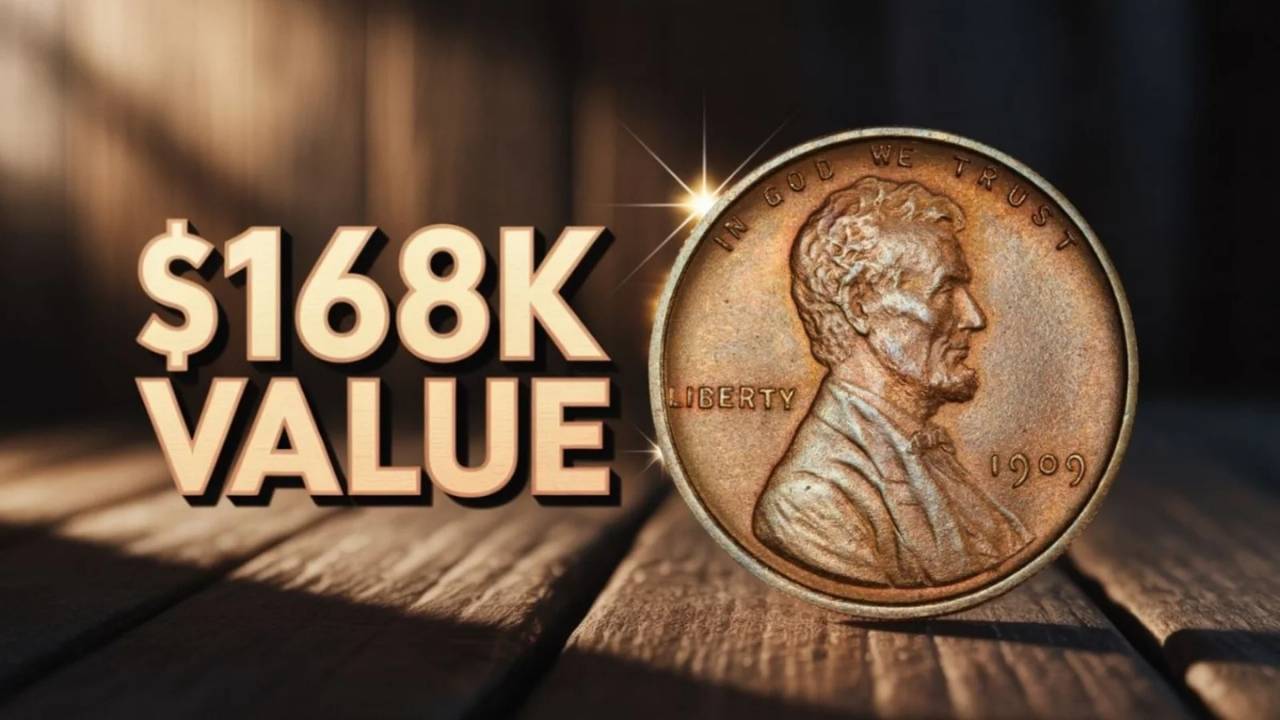Imagine rifling through your spare change and spotting a penny from 1943. It looks ordinary enough, but then surprise it doesn’t cling to a magnet. You might just be holding one of the most famous minting mistakes in U.S. history: the elusive 1943 copper Lincoln Wheat Penny, a coin so rare that one sold for over $168,000.
This small copper disc, born from a wartime oversight, continues to spark excitement among collectors and treasure hunters. But what makes it so special, and how could one still be hiding in your pocket change today? Let’s dive into the fascinating story.
What Exactly Is the Lincoln Wheat Penny?
The Lincoln Wheat Penny is one of America’s most iconic coins. Introduced in 1909 to mark the centennial of Abraham Lincoln’s birth, it features the 16th president’s portrait on the front and a pair of wheat stalks on the back symbols of growth and prosperity.
Minted until 1958, these coins were typically made from 95% copper, giving them their classic reddish-brown color. Billions rolled out of the Mint over the decades, making them common in circulation and popular among beginner collectors. But in 1943, everything changed.
The Wartime Switch: Why Pennies Turned to Steel
World War II created an enormous demand for copper, which was needed for ammunition, shell casings, and electrical wiring. To conserve resources, the U.S. Mint shifted production in 1943 from copper pennies to ones made of zinc-coated steel.
These “steel cents” were lighter and had a silvery appearance, but they came with problems. They rusted easily, were often mistaken for dimes, and felt strange in people’s hands. By 1944, the Mint returned to copper, this time using recycled shell casings from the war.
Most steel pennies today aren’t particularly valuable they usually fetch only a few cents but they remain a tangible reminder of America’s wartime sacrifices.
The 1943 Copper Penny: An Accidental Treasure
Here’s where the story gets exciting. During the transition to steel, a handful of leftover copper planchets (the blank discs used to strike coins) accidentally made their way into the presses. The result? A small number of 1943 pennies struck in copper rather than steel.
Experts estimate that fewer than 30 genuine 1943 copper pennies survive today across all three U.S. Mints Philadelphia, Denver, and San Francisco. The Mint tried to remove them, but a few slipped into circulation, sparking decades of rumors, myths, and collector frenzies.
Stories even claim that Henry Ford once offered a free car to anyone who brought him one (though historians debate whether that’s fact or folklore). What’s certain is that these coins have become holy grails in the numismatic world.
How to Tell If You’ve Found One
Think you’ve spotted a 1943 copper penny? Before you celebrate, know that counterfeits are everywhere. Here are a few easy checks:
- Magnet Test: Real copper pennies don’t stick to a magnet. Steel ones do.
- Weight Test: Copper pennies weigh about 3.11 grams; steel pennies weigh only 2.7 grams.
- Color and Edge: Genuine copper pennies show a natural reddish-brown tone, while steel ones are gray or silver.
Be cautious some fakes are simply steel pennies plated with copper, while others are altered 1948 coins with their dates tampered to look like 1943. If your coin passes the quick tests, take it to a reputable grading service like PCGS or NGC for authentication.
What Are They Worth Today?
The headline $168,000 isn’t an exaggeration. A mid-grade 1943-D copper penny sold for that amount, while higher-grade examples have crossed the million-dollar mark at major auctions. Condition and mint mark play a huge role in value:
- 1943 (Philadelphia): From $100,000 in worn condition to over $1.7 million in mint state.
- 1943-D (Denver): Typically $150,000 and up; one pristine piece sold for $2.4 million.
- 1943-S (San Francisco): Rarer still, often valued at $200,000–$500,000 depending on grade.
Even heavily circulated ones are worth a small fortune compared to their one-cent face value.
Why Some Are Still Circulating
It’s astonishing, but these rarities are still out there. Because they look nearly identical to regular copper pennies from 1942 and earlier, many passed unnoticed through circulation. Some ended up in jars, piggy banks, or tucked away in forgotten drawers.
Each year, new stories emerge of unsuspecting people stumbling across one. In a world where spare change is fading from everyday life, the thrill of discovering a hidden treasure like this keeps the legend alive.
Fun Facts About the Lincoln Wheat Penny
- Designer Drama: The coin’s creator, Victor David Brenner, had his initials “V.D.B.” placed prominently on the back in 1909, sparking public backlash until they were removed.
- Billions Made: Between 1909 and 1958, over 25 billion Wheat Pennies entered circulation.
- Other Collectible Errors: Not just 1943 watch out for the 1955 doubled-die penny and the 1909-S VDB, both worth hundreds or thousands.
Conclusion: Keep Your Eyes on Your Change
The 1943 copper Lincoln Wheat Penny isn’t just a coin it’s a piece of American history that slipped through the cracks. From wartime shortages to modern-day auction houses, its journey reminds us that extraordinary treasures can hide in plain sight.
So the next time you dig into a coin jar, don’t dismiss that old penny too quickly. With the right year and the right metal, it might just be your ticket to $168,000 or more.
FAQ
1. How much is a 1943 copper penny worth?
Anywhere from $100,000 to over $2 million, depending on condition and mint.
2. Are 1943 steel pennies valuable?
Most are common, worth just a few cents, though rare errors can fetch more.
3. What’s the easiest way to check my penny?
Try the magnet test. Steel sticks, copper doesn’t.
4. Why was copper so important in WWII?
It was essential for ammunition, wiring, and war machinery.
5. Where should I sell one if I find it?
Go through professional grading first, then auction houses like Heritage Auctions or Stack’s Bowers.




